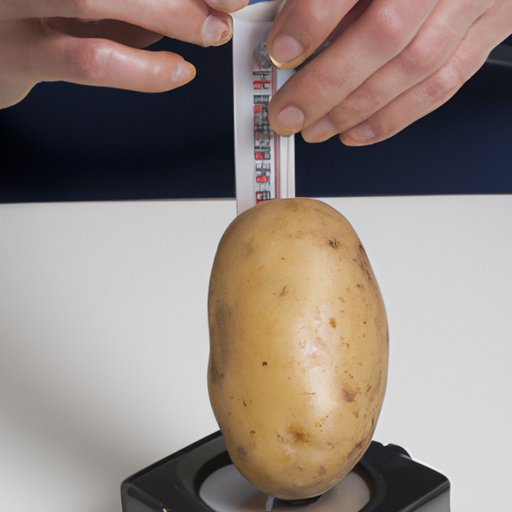Introduction
Potatoes are a staple food in many households and can be cooked in a variety of ways. However, when potatoes go bad, they can cause food poisoning and other health problems. Knowing how to tell if potatoes have gone bad is an important skill for any home cook.

Assessing the Color of Potatoes
One of the most common signs that a potato has gone bad is discoloration. If the potato has turned green or has dark spots, it is no longer safe to eat. According to the United States Department of Agriculture (USDA), “Green potatoes contain higher levels of a toxin called solanine and should be thrown out.” The green color is caused by exposure to light, which increases the solanine levels. Additionally, potatoes with brown patches on the skin should not be eaten as this is a sign of rot.
Detecting a Foul Smell
Another way to tell if a potato has gone bad is to smell it. If the potato has a sour odor or a smell similar to rotten eggs, it is no longer safe to consume. The USDA states, “If the potato has developed an off odor, flavor or smell, it should not be eaten.”
Examining for Soft Spots
When examining potatoes for spoilage, look for soft spots on the skin or flesh. These areas will feel squishy and may even be slightly mushy. If the potato has any soft spots, it is no longer safe to eat. According to the University of Illinois Extension, “Soft spots can indicate the presence of bacteria or molds.”
Checking for Mold Growth
Mold growth is another common sign that a potato has gone bad. If the potato has white or green fuzz growing on it, it should not be eaten. Additionally, if the potato has a musty smell, this is a sign of mold growth. The University of Illinois Extension states, “Molds can produce highly toxic substances known as mycotoxins.”
Determining if Potatoes are Sprouting
Sprouted potatoes are not necessarily bad, but they can be bitter in taste. To determine if potatoes are sprouting, look for small shoots on the skin. If there are any buds forming on the potato, it is likely past its prime. The University of Illinois Extension suggests, “It is best to discard potatoes that have sprouted or are beginning to shrivel.”

Testing the Firmness of Potatoes
Finally, when assessing potatoes for spoilage, examine the firmness. Fresh potatoes should be hard and stiff, not too soft. If the potato is too soft, it is likely past its prime and should be discarded.
Conclusion
Knowing how to tell if potatoes have gone bad is an important skill for any home cook. Common signs of bad potatoes include discoloration, soft spots, foul odor, mold growth, and sprouting. Additionally, potatoes should be hard and stiff, not too soft. To prevent potatoes from spoiling, store them in a cool, dry place away from direct sunlight.
(Note: Is this article not meeting your expectations? Do you have knowledge or insights to share? Unlock new opportunities and expand your reach by joining our authors team. Click Registration to join us and share your expertise with our readers.)
